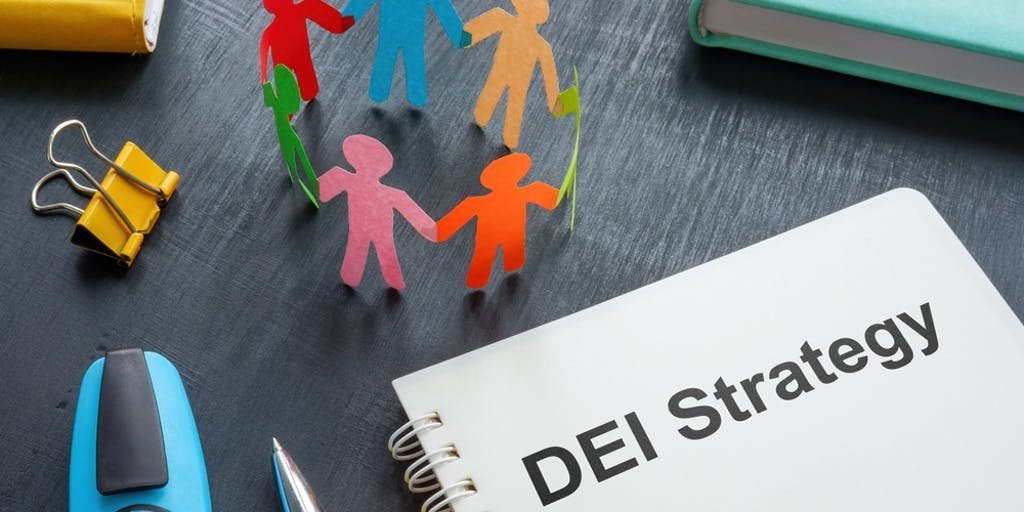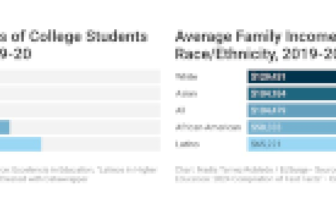How My School Chooses Courage Over Fear to Prioritize DEI

[ad_1]
As I drove down the lengthy driveway of Mercy Montessori Center, I called my great aunt from Athens, Georgia, whom we lovingly call Aunt Puddien. Aunt Puddien is like another mother to me and I trusted her wisdom. She always introduced me to a relative or friend of the family as the teacher to which they responded with praise and affirmation. To them, loving and teaching our youth was a great honor despite the devaluation educators often experience.
As an educator, I work within and around systems that are designed to lock out historically marginalized communities; this is why I lead and educate through a DEI lens. My passion for DEI did not change once I transitioned from the classroom to school leadership. If anything, the more I engaged in systems change work, racial equity training and audits, the more pronounced my passion and investment in DEI became. The opportunity to lead this work full-time in a K-12 setting felt like a natural next step.
Last year, I interviewed with multiple organizations for a new role that would focus on DEI initiatives and had just finished my third interview of the day at Mercy Montessori in Cincinnati. Shortly after the interview, I had a phone conversation with Aunt Puddien:
“Hey, Suga! How did it go?” Aunt Puddien answered the phone. I had just participated in three interviews for a DEI role.
“Well…” I began. “I connect most with Mercy.”
“Mmm. Why do you think that is?”
“The school seems most committed to supporting and doing the work,” I responded.
“Well, baby, you have to go where they take it seriously,” Aunt Puddien encouraged. “You’ll be called where you’re meant to be.”
After witnessing companies and organizations renege on their commitment to DEI after the police murder of George Floyd, I promised myself that I would not work with an organization or a company that treated DEI as a trend or an item on a compliance checklist.
Since becoming the inaugural director of diversity, equity, inclusion and belonging (DEIB) at Mercy Montessori and leading the DEIB strategy for the school, I’ve found that progress can happen in the face of social opposition, political polarization and targeted campaigns that we are experiencing in our larger society. In fact, it is in this climate of fear and misinformation that DEI is critically necessary.
For the past nine months, I have worked diligently and collaboratively with all our school community stakeholders to fully realize the essential goals outlined in our school’s board-approved DEIB strategic plan, and during these nine months, I’ve learned that there are more people willing to change and support DEI than I previously thought.
Goal 1: Recruit a Team of Committed and Diverse Individuals to Effectuate Change
To create a more diverse student and staff population, we have to do the work of building and nurturing a culture that creates a safe and courageous space for students, families and staff who have been historically marginalized. My time as the director of family engagement at a charter school in Cincinnati gave me insight into what it takes to cultivate this space, and I knew I would need a team of dedicated individuals to help me achieve this goal and execute our DEIB strategic plan.
When I served on previous school committees, the most dominant voices in the room were often white men; I had no intention of replicating this on our DEIB committee. Our committee had to be a space where everyone’s voice had merit and value, so I worked to recruit membership that was diverse and inclusive of all identities across race, religion, and family structure. Eventually, I was able to elicit participation from 18 individuals who would help me achieve my vision for DEIB at Mercy.
In our monthly meetings, we start with updates that capture our progress and challenges. We then divide into three focus groups; each focus group is assigned a goal from the strategic plan and tasked with overseeing and carrying out the actions and tasks associated with the goal. This framework has given each committee member ownership over the strategic plan, ensuring that all members are accountable and devoted to meeting our intended outcomes.
Together, we have made great progress in achieving the action items outlined in our strategic plan, including the establishment of a DEIB dashboard, the rollout of a DEIB concerns form for families and students and the creation of a DEIB resource bank for all community members at various levels of their DEIB learning.
There were times when I would look around and take in the scene of administrators working with parents, parents working alongside teachers and teachers working alongside school alum — all of us working in collaboration to ensure that the goals of our strategic plan are carried out.
Our committee is empowered by our differences. We share our views and perspectives openly and respectfully, trusting each other to work through the mess to get to a solution. It is not so important that we are right as much as it is that we get it right.
Goal 2: Provide Practical Guidance and Space for Cross-Cultural Engagement
I believe a key part of DEIB is building intercultural competence within an organization. As educators, we are in an increasingly diverse world, and it is our obligation to provide a culturally responsive and equitable education experience to the students and families that we serve. To achieve this, we must increase our capacity to understand the cultural identity of our students and equip ourselves with awareness and tools to engage across lines of cultural differences.
Students who are culturally empowered are students who show up unapologetically and engaged. With this vision in mind, each teacher was instructed to develop annual classroom goals that were rooted in culturally responsive teaching strategies.
In one case, a teacher wished to increase the diversity of her classroom library. Using “A Tool for Selecting Diverse Texts”, the teacher conducted an audit of the classroom library and determined its strengths, weaknesses and opportunities:
- Which voices are dominant, and which ones are missing?
- What is the nature of the stories being told?
- Who gets to decide what books go into the library?
As a result of this audit, there are more diverse texts included in each classroom library. In addition to the goals developed by teachers, our students were now better able to assess who was being left out of the class curriculum.
For instance, a student from another classroom challenged a display of inventors in the classroom. “Why are they all men?” they asked. I felt this was a valid observation, and I encouraged the teacher to allow students to be a part of the process. In response, this student’s teacher began to collect resources that would provide a more diverse representation of scientists, inventors, and philosophers.
This is both a learning opportunity and a leadership opportunity for students to champion diversity and facilitate inclusion within their classrooms. Now, students are able to choose from a selection of books that both represent their identities and allow them to engage with stories that feature cultures different from their own.
Goal 3: Communicate the Importance of Our Work
As the leader of our DEIB strategy at Mercy, I am transparent: both about the work we are doing and the setbacks we experience. I do this because I believe this is how we build organizational trust and buy-in from our stakeholders. Therefore, I make great efforts to provide transparency and report our progress on DEIB programming and initiatives.
Regularly, I report our progress with parents and families via social media and send updates in our DEIB newsletter and at school meetings. After presenting to a group of parents for one of our Parent Education Nights, many families were overwhelmed at the amount of work and progress that has taken place over the course of the 2023 school year and several had positive words and feedback to offer:
“Wow!” one parent announced. “It’s really great to see the strides and accomplishments thus far.”
“I’m wondering if you’ve thought about collaborating with Mercy Montessori Family Association on some of the cultural heritage celebrations? We’d love to help out.”
“What curriculum are you using for programming with students?”
Through transparent communication, we built trust and inspired action. Teachers are seeking opportunities to co-present on DEI-related topics at staff meetings. Parents are expressing a desire to serve on the DEIB committee next year. Students are engaging in conversations and working through conflict. If nothing else, communicating our progress toward our DEIB goals has energized our community and created a safe space to do so.
Courage Under Fire
Since being the director of DEIB at Mercy Montessori, I’ve learned so much about what is required to drive a DEIB strategic plan. The greatest lesson that I’ve had is that this work cannot and should not be done alone. Furthermore, the work cannot be done in a day.
As school DEI programs continue to be vilified and attacked, I charge us all to consider our children and the world we wish to leave for them. In this climate of fear and polarization, we must remain steadfast. Above all else, we must choose courage over fear.
[ad_2]
Source link







